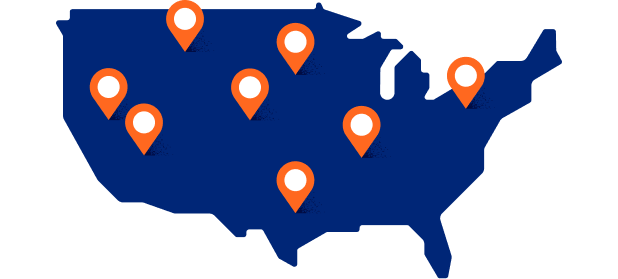Individual and Family Health Insurance Plans
Explore our individual and family health insurance plans, like short term and ACA Marketplace plans that offer coverage with benefits designed with your unique needs in mind. Enter your ZIP code to see plans available near you.
Click the button to get your free health insurenace quote

Health plans for individuals and families under age 65
LIFE INSURANCE
HEALTH INSURANCE
Find coverage options if you’re self-employed and have no employees.
Find coverage options if you’re self-employed and have no employees.

Find coverage options if you’re self-employed and have no employees.
Find coverage options if you’re self-employed and have no employees.
LOOKING FON AN AFFORDABLE INSURANCE
You can get a quote and learn more about your coverage options.
LIFE
HEALTH INSURANCE
Explore a range of individual and family plan options, including ACA Marketplace plans
DENTAL & VISION
Browse plans that can help you get coverage for medical costs not covered by your medical plan.
Get help to find a plan
Answer a few questions to see which options may be available for you.

Find individual and family insurance plans in your state
Explore the insurance plans available in your state and get fast, free quotes on coverage now
Frequently asked questions about individual and family plans
Answer- Visit the Health Insurance Marketplace: You can start by visiting HealthCare.gov to explore your options. This is the official site for the Health Insurance Marketplace, where you can compare plans and enroll online.
Apply Online: The fastest way to apply is online through HealthCare.gov. You can create an account, fill out an application, and see the plans available in your area.
Get Help: If you need assistance, you can find local help through the Marketplace. There are people and organizations that can help you apply for coverage, and some offer help in languages other than English.
Use an Insurance Agent or Broker: You can also get help from an insurance agent or broker. They can help you compare plans and complete your enrollment. You don't pay more by using an agent or broker, as they are generally paid by the insurance company
IMPORTANT - You can contact health insurance companies directly to see the plans they offer
When it comes to individual health insurance plans, you typically have several options to choose from. Here are the main types:
- Health Maintenance Organization (HMO): HMO plans require you to choose a primary care physician (PCP) and get referrals from them to see specialists. They usually have lower premiums and out-of-pocket costs but require you to stay within a network of providers.
- Preferred Provider Organization (PPO): PPO plans offer more flexibility in choosing healthcare providers and do not require referrals to see specialists. They have a larger network of providers, but premiums and out-of-pocket costs are usually higher compared to HMOs.
- Exclusive Provider Organization (EPO): EPO plans are like PPOs but with a more limited network of providers. You don't need referrals to see specialists, but you must stay within the network for your care to be covered, except in emergencies.
- Point of Service (POS): POS plans combine features of HMOs and PPOs. You choose a PCP and need referrals to see specialists, but you can also see out-of-network providers at a higher cost.
- High-Deductible Health Plan (HDHP): HDHPs have higher deductibles and lower premiums. They are often paired with Health Savings Accounts (HSAs), which allow you to save money tax-free for medical expenses.
- Catastrophic Health Insurance: Catastrophic plans are designed for young adults under 30 or those who qualify for a hardship exemption. These plans have low premiums and very high deductibles, covering only essential health benefits after you meet the deductible.
Each plan type has its own advantages and disadvantages, so it's important to consider your healthcare needs, budget, and preferences when choosing a plan. If you need more detailed information about any of these plans, just let me know!
Submitting documents to the Health Insurance Marketplace is a straightforward process.
Uploading Documents Online
- Prepare Your Documents: Make sure you have an electronic file of the document saved on your computer. It can be a scan or a clear photo. Accepted formats include .pdf, .jpeg, .jpg, .gif, .xml, .png, .tiff, and .bmp. The maximum file size is 10MB.
- Log In: Go to HealthCare.gov and log into your account.
- Upload: Follow the instructions to upload your documents. You can find a screen-by-screen guide with pictures here.
Mailing Documents
- Prepare Copies: Do not send original documents. Send photocopies only.
- Include Necessary Information: Include your printed bar code page from your eligibility notice. If you don’t have a bar code, include your printed name and the application ID.
IMPORTANT: You may contact the agency you affiliated with that was helping you with subscription during the enrollment process just to guide you on how to submit the documents
Obtaining life insurance involves several steps. Here's a guide to help you through the process:
- Assess Your Needs: Determine why you need life insurance and how much coverage you require. Consider factors like your income, debts, and the financial needs of your dependents.
- Choose a Policy Type: Decide between term life insurance (coverage for a specific period) and permanent life insurance (coverage for your entire life). Term life is generally more affordable, while permanent life offers additional benefits like cash value accumulation.
- Compare Quotes: Shop around and compare quotes from different insurance companies. You can use online comparison tools or work with an insurance broker to find the best rates and coverage options.
- Apply for Coverage: Once you've chosen a policy, you'll need to fill out an application. This typically involves providing personal information, answering health-related questions, and possibly taking a medical exam.
- Review the Policy: Carefully review the policy terms and conditions before signing. Make sure you understand the coverage, premiums, and any exclusions or limitations.
- Pay Premiums: After your application is approved, you'll need to pay the premiums to keep the policy active. Premiums can be paid monthly, quarterly, or annually, depending on the insurer's options.
- Keep Your Policy Updated: Review your policy periodically to ensure it still meets your needs. Update your coverage if there are significant changes in your life, such as marriage, the birth of a child, or a change in financial situation.
If you need more detailed information or have specific questions, feel free to ask!
Need coverage for Dental & Vision
You have a few options for obtaining dental and vision insurance coverage:
- Health Insurance Marketplace: You can explore dental, and vision plans through the Health Insurance Marketplace at HealthCare.gov. Some health insurance plans include dental and vision coverage, or you can purchase standalone plans.
- Insurance Companies: Many insurance companies offer dental and vision plans. For example, Anthem provides comprehensive guides on dental and vision insurance, including coverage details and costs. Blue Cross and Blue Shield of Texas also offer dental, and vision plans for individuals and families.
- Employer-Sponsored Plans: If you have a job, check if your employer offers dental and vision insurance as part of their benefits package. Employer-sponsored plans often provide good coverage at a lower cost.
- Specialized Providers: Some companies specialize in dental and vision insurance. For instance, Spirit Dental offers various plans with no waiting periods, and Humana Dental is known for its low premiums.
- Medicare Advantage Plans: If you are eligible for Medicare, consider looking into Medicare Advantage plans that include dental and vision coverage.
Learn more about health insurance
Browse the topics here to get familiar with health insurance and learn how it works.
Get answers about health insurance
Let’s go over the basics about health insurance and the reasons to have it.
Get answers about health insurance
Let’s go over the basics about health insurance and the reasons to have it.
Get answers about health insurance
Let’s go over the basics about health insurance and the reasons to have it.

